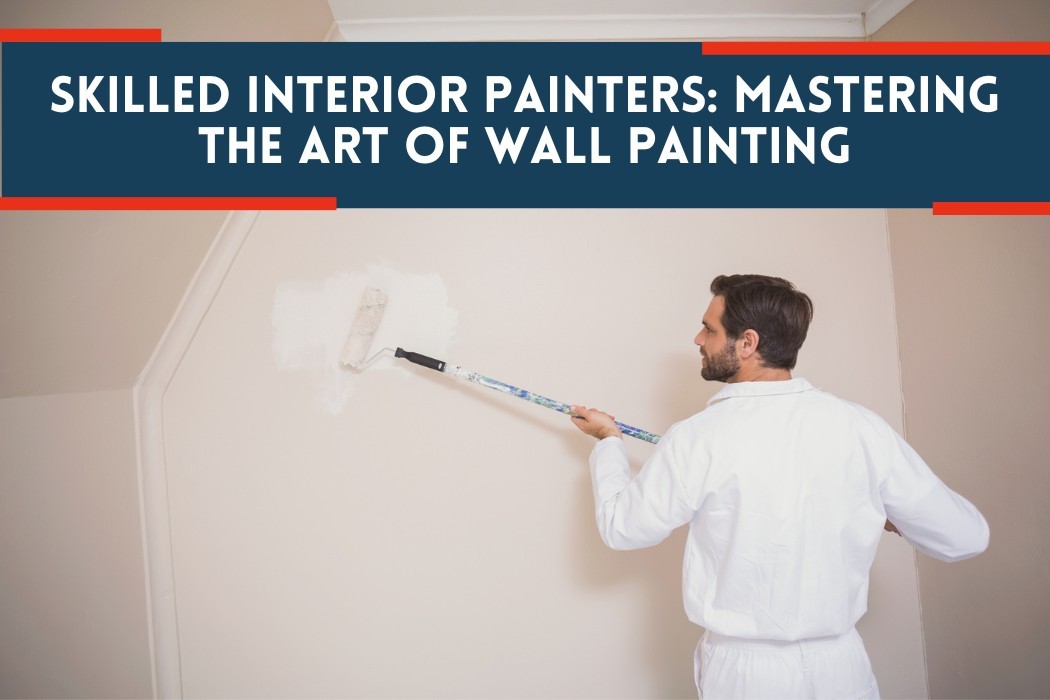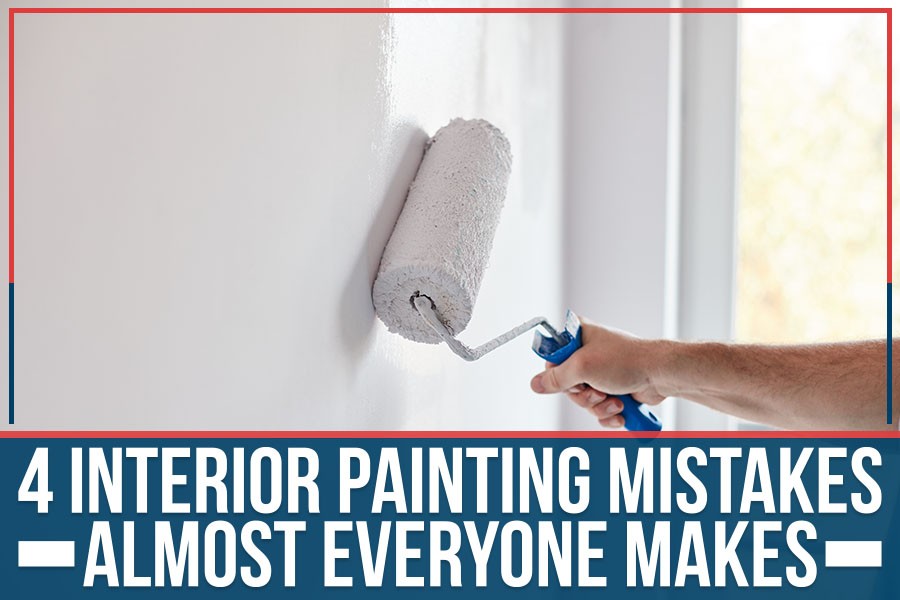4 Interior Painting Mistakes Almost Everyone Makes
Skilled Interior Painters: Mastering the Art of Wall Painting

Table of Contents
Wall painting is an art form that requires a certain level of skill and knowledge to achieve the desired result. It involves a combination of selecting the right paint, preparing the surface, understanding tools and techniques, and learning color theory. This article will explore these topics in detail, helping interior painters learn how to master this craft.
The first step when it comes to wall painting is selecting the appropriate paint for the job. The type of paint chosen will depend on factors such as whether it is a new or old wall, what kind of environment it exists in (e.g., indoor or outdoor), and what look the painter is trying to achieve (e.g., matte or glossy finish). Once the right type of paint has been selected, it must be prepared correctly before applying it to the wall surface. This includes cleaning off any dirt or debris from the wall surface and using primer if necessary.
Once these preparations are complete, interior painters can begin to explore tools and techniques for applying their chosen paint onto walls successfully. Different types of brushes and rollers can be used depending on whether one wants an even texture across their entire wall or if they would prefer some variation in texture for decorative effect. As well as understanding which tools are best for painting walls, one should also become familiar with color theory so that they know how different colors interact with each other when placed side by side on a wall surface. Finally, once all these steps have been taken care of, there are often some finishing touches that need to be done such as filling any gaps between trim pieces or touching up any areas where blemishes may appear over time due to wear-and-tear or moisture damage etcetera.
Selecting the ideal paint for a wall painting project is an important step in achieving excellent results. It is essential to consider what type of paint to use, such as latex-based or oil-based. Additionally, it is important to determine which finish works best for the desired effect, such as eggshell, semi-gloss, satin, or gloss. The climate and humidity of the room should also be taken into account when choosing a paint that will hold up over time. For instance, paints with higher levels of vinyl are often better suited for humid climates due to their mildew resistant properties. Furthermore, it is wise to take into consideration any special needs that may require a particular type of paint such as those specifically designed for use in bathrooms or high traffic areas. Ultimately, selecting the right type and quality of paint can make all the difference in producing beautiful walls with long lasting results.
Preparing the wall surface is essential for achieving desired results from a painting project. Before applying any paint, it is important to inspect the walls for any holes or cracks that need to be filled in and smoothed over, nails that require hammering down, or other areas of repair. Once repairs are complete, it is also necessary to remove all dust, dirt and grease on the walls with soap and water or a mild detergent solution. After allowing the walls to completely dry, they must be primed before any coats of paint can be applied. Priming helps to create an even surface that will allow the paint to adhere properly. It also helps reduce the risk of fading and peeling due to poor adhesion of the paint layers.
Knowing the appropriate tools and techniques is essential for successful completion of a painting project. Professional interior painters use different tools depending on the project they are doing, such as rollers, brushes, sprayers, scrapers, and paint pads. Each tool has its own advantages; for example, rollers can be used to quickly apply large amounts of paint in an even layer over larger surfaces. Brushes can be used to paint edges and corners with greater precision. Scrapers may also be needed to remove old or chipped layers of paint from walls before applying a new coat. Additionally, there are many various painting techniques that professional interior painters need to understand in order to effectively complete their work. These include ragging (creating texture with cloth), sponging (creating texture with sponge), colorwashing (mixing several colors together), stippling (using dots and dabs) and stripping (using wide-toothed brush strokes). An understanding of these tools and techniques is key for producing high-quality results when painting walls inside a home or business.
Grasping the fundamentals of color theory is essential for creating aesthetically pleasing results when painting a room. Color theory helps interior painters to understand how colors interact with each other and form relationships that can be used to create a certain mood or ambience. By learning about color contrast, balance, harmony, saturation, tint and shade, interior painters can better utilize their knowledge of color to create the desired effect in a room.
Understanding the principles of color theory also allows interior painters to use it as an effective way of communicating ideas through art. The shades and tones chosen by an artist will affect what message they are trying to send and how it is interpreted by viewers. For example, warm colors such as reds and oranges will give off a passionate feeling while cool colors like blues and greens tend to be calming or serene. Knowing this information can help interior painters craft unique pieces that evoke certain emotions within their clients.
Adding the finishing touches to a room is essential for creating an inviting environment. This includes painting the walls, trim, and accents with precision and skill. Professional interior painters understand that a room is not complete until the details are addressed. Finishing touches can include adding texture to the walls or painting unique shapes or patterns on them. Other finishing touches could include painting furniture in order to match the wall color or create contrast. These techniques require knowledge of color theory as well as artistic expertise. When used strategically, these techniques can transform any space into something truly special. In addition, professional interior painters must be knowledgeable about sealing surfaces properly so that paint does not chip off prematurely or become discolored over time due to humidity and wear-and-tear. Properly applying sealant is another crucial part of mastering wall painting and creating beautiful spaces that will last for years to come.
The final touches to any painting job are essential in achieving a professional look. It is important to consider the selection of materials and tools that can be used, as well as the techniques necessary for application. Additionally, knowledge of color theory is essential in order to achieve desired results. Taking these steps will ensure that an interior painter can complete any wall painting project with confidence and skill. With a deep understanding of the process, interior painters have the opportunity to transform walls into works of art that bring beauty and style into their clients' homes.
Author

Mason Marquis, raised in Newport Beach, California, and Austin, Texas, amalgamated his experiences from both vibrant cities in his journey. His academic pursuit in Economics and Psychology at the University of North Texas (UNT) led to the founding of Spray Tex Painting. This venture was not just a business for Mason but a practical application of his academic learnings, particularly the integration of economic concepts and psychological understanding. Spray Tex Painting, under Mason's direction, transcends being merely a painting service; it's a platform where client visions are realized through dedication and creativity.
Related Articles

4 Interior Painting Mistakes Almost Everyone Makes

4 Tips For Upgrading The Paint At Your Food Joint

5 Unique Texture Painting Ideas to Add Depth to Your Walls

A Comprehensive Approach: Unveiling the Whole-house Paint Services